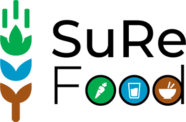
SURE+ Interdisciplinary Workshop
Objective:
To improve the cross-domain exchange within the project and to foster collaborations among all sub-projects within SURE+, the joint science and social science seminar will be a platform for postdocs, Ph.D. and SURE+ related project participants to communicate their methodology and research findings. It can also serve as a platform for collaboration on future potential research development.
Organization:
Two presentations each time (with one presenter from the environmental science group, and one presenter from social science group).
Each presentation takes 15 minutes, and 15 minutes for Q&A. It can be a monthly seminar (with one time in Lumen and one time in Leeuwenborch).
Time: 12.30 – 13.30pm, Thursday, November 21, 2019
Room: Lumen 3 [at] Wageningen Campus
Program:
| Time | Title |
| 12.30 – 12.45 | Excess nutrient loads to Lake Taihu: Opportunities for nutrient reductionPresenter: Mengru Wang (Water Systems and Global Change) |
| 13.45 – 13.00 | General Question and Answer |
| 13.00 – 13.15 | Empowering smallholders on sustainable grain production: A case study of science and technology backyard Presenter: Fan Li (Development Economics Group, Wageningen University) |
| 13.15 – 13.00 | General Question and Answer |
For future presentation please contact Fan Li (fan.li@wur.nl) and Mengru Wang (Mengru.wang@wur.nl).
Detailed abstract of each paper is presented as follow:
Excess nutrient loads to Lake Taihu:
Opportunities for nutrient reduction
Mengru Wang, Maryna Strokal, Peter Burek, Carolien Kroeze, Lin Ma, Annette B.G. Janssen
Abstract:
Intensive agriculture and rapid urbanization have increased nutrient inputs to Lake Taihu in recent decades. This resulted in eutrophication. We aim to better understand the sources of river export of total dissolved nitrogen (TDN) and phosphorus (TDP) to Lake Taihu in relation to critical nutrient loads. We implemented the MARINA-Lake (Model to Assess River Inputs of Nutrients to seAs) model for Lake Taihu. The MARINA-Lake model quantifies river export of dissolved inorganic and organic N and P to the lake by source from sub-basins. Results from the PCLake model are used to identify to what extent river export of nutrients exceeds critical loads. We calculate that rivers exported 61 kton of TDN and 2 kton of TDP to Lake Taihu in 2012. More than half of these nutrients were from human activities (e.g., agriculture, urbanization) in Sub-basins I (north) and IV (south). Most of the nutrients were in dissolved inorganic forms. Diffuse sources contributed 90% to river export of TDN with a relatively large share of synthetic fertilizers. Point sources contributed 52% to river export of TDP with a relatively large share of sewage systems. The relative shares of diffuse and point sources varied greatly among nutrient forms and sub-basins. To meet critical loads, river export of TDN and TDP needs to be reduced by 46–92%, depending on the desired level of chlorophyll-a. There are different opportunities to meet the critical loads. Reducing N inputs from synthetic fertilizers and P from sewage systems may be sufficient to meet the least strict critical loads. A combination of reductions in diffuse and point sources is needed to meet the strictest critical loads. Combining improved nutrient use efficiencies and best available technologies in wastewater treatment may be an effective opportunity. Our study can support the formulation of effective solutions for lake restoration.
Keywords: Critical nutrient loads, River export of nutrients, Nutrient sources, Sub-basins
MARINA-Lake, PCLake model
Empowering smallholders on sustainable grain production:
A case study of science and technology backyard
Fan Li
Abstract:
Agricultural extension plays a vital role in affecting agricultural production. Conventional linear transfer of knowledge and technology might be effective in improving agricultural productivity; however, it might not be able to achieve sustainable development. In this study, we examine the impact of a pilot experimental program in promoting sustainable farming practice through an active agricultural extension services in rural China. The pilot experimental program was conducted in the north China plain with a typical smallholder farming system. A large-scale household survey was conducted, and matching method is employed to conduct the empirical analysis. Results show that the experiment has yielded a significant impact on improving agricultural productivity and on reducing use of chemical fertilizer. On average, smallholders who received the intervention have produced an additional 278 kg grains per hectare (about 0.22 st.d). The nutrient use efficiency (NUE) of phosphorus and potassium has improved significantly. A significant reduction on base fertilizer was observed, however, no significant effect observed in top-dressing fertilization.
Keywords: smallholders, agricultural extension services, rural smallholder, China
